
4-Xtremes – Part 9: Adventures from the Lofoten islands to Storebælt
Series: 4-Xtremes – The World Tour
Storms, the hunting season, roads made of iron slag: the Kammermanns experience many a surprise on their route from northern Norway to southern Sweden!
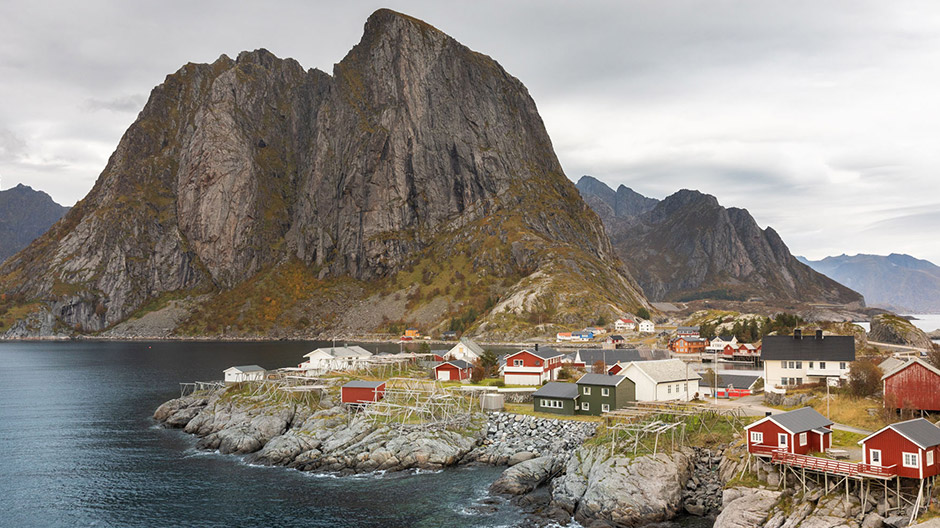
Wild landscape, wild weather: on the Lofoten islands, rain and storms didn’t leave the Kammermanns much time to take photos and for other activities.
It is more than 1400 km as the crow flies from the Lofoten islands high up in northern Norway to the most southerly tip of Sweden. You can draw that on a typical map as an almost vertical line. However, if you follow the route on the actual road, you have to take a good few "detours". To put it succinctly: we have done a lot of kilometres over the last few weeks.
We had been looking forward to the Lofoten islands for a long time. But as is often the case, when you have high expectations of something: you’re disappointed. We had to sit out a storm for several days. The bridges were closed and we parked in a small harbour – facing away from the wind which ripped across the islands at up to 120 kilometres an hour. Travelling was arduous and we kept an eye on the weather apps at all times in order to find a relatively calm place in good time.
Wild landscape, many campers.
The landscape on the Lofoten islands is very wild and craggy mountains drop steeply down to the water. That leaves little room for the many campers, so several vehicles always have to share the few parking spaces. The region is very touristy and regulated accordingly. On the islands, we missed the wide-open space, free of people that you can experience elsewhere up here.
That is why we set off back towards the mainland after a few days. After three hours on the ferry we reached the town of Bodø and continued our drive along the coast. The weather on the mainland was noticeably warmer than on the Lofoten. And although there were lots of campers there, they were more spread out. And not forgetting: there is a lot to see because the road leads across many fjords and past glaciers.
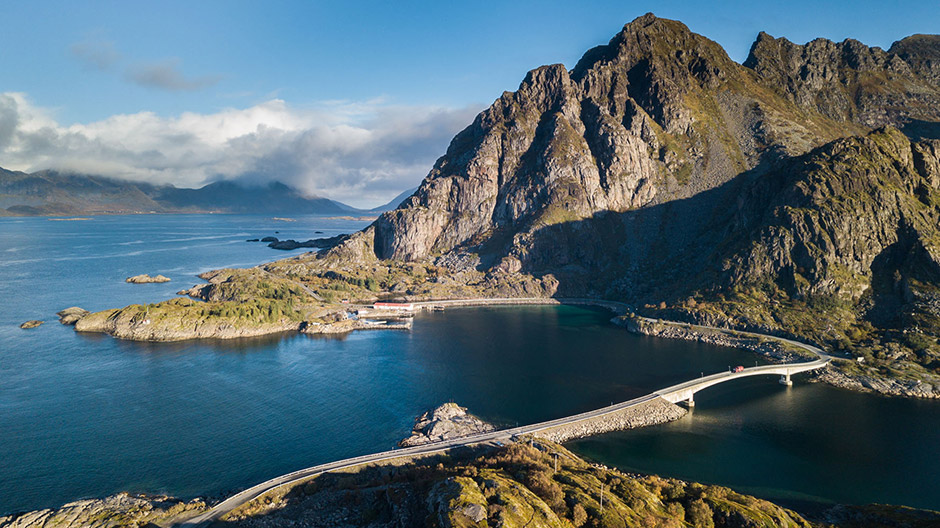
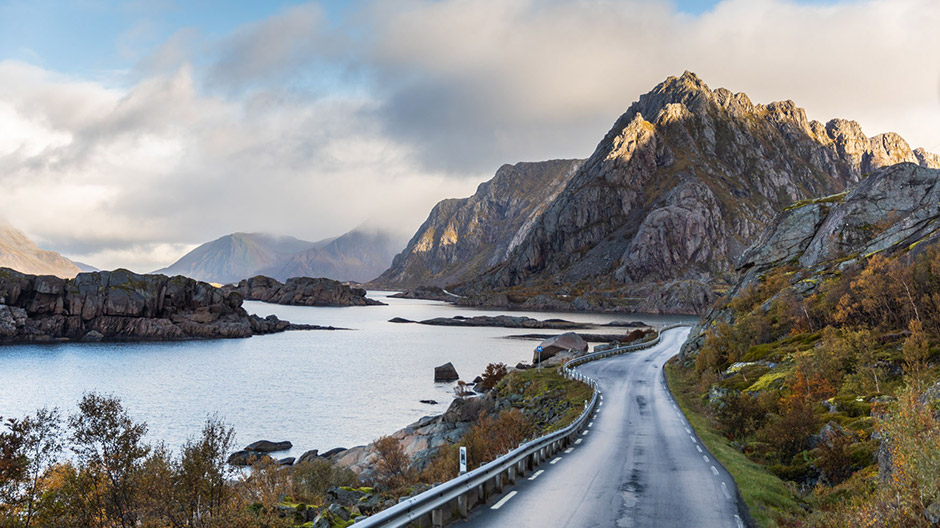
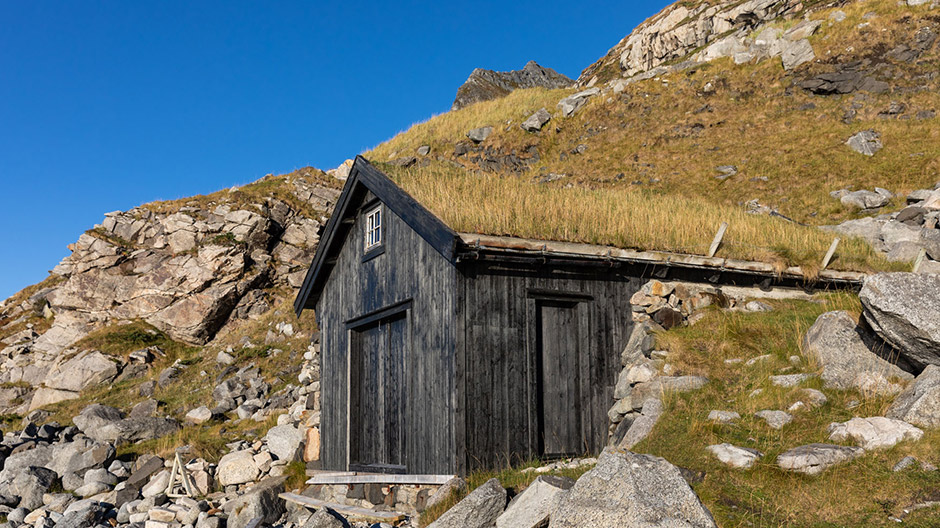
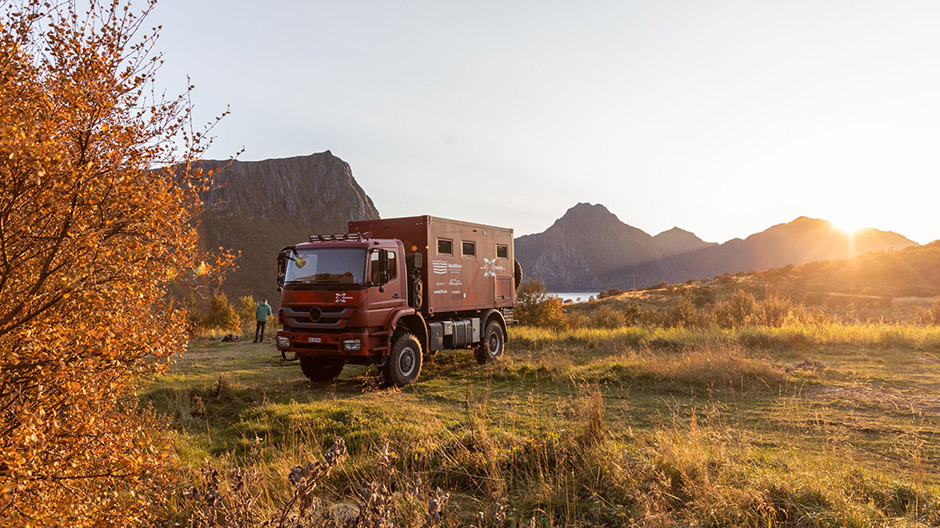
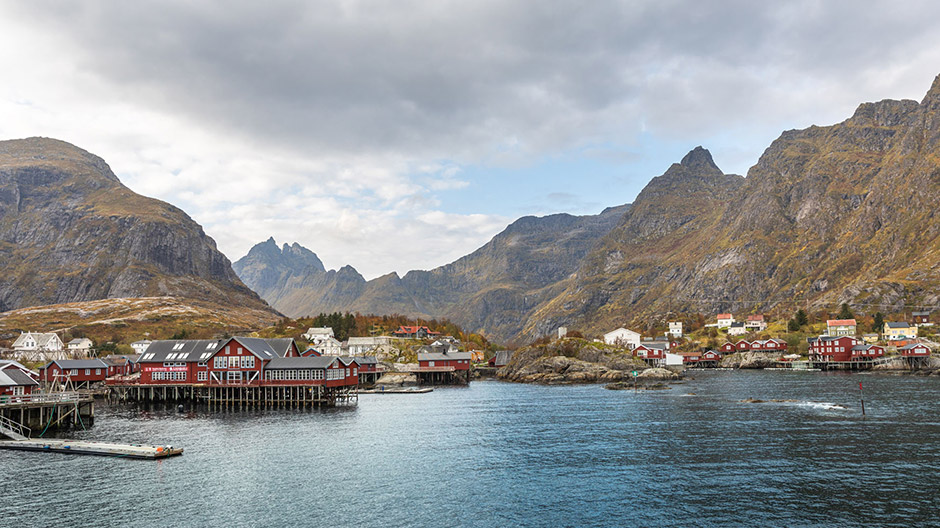
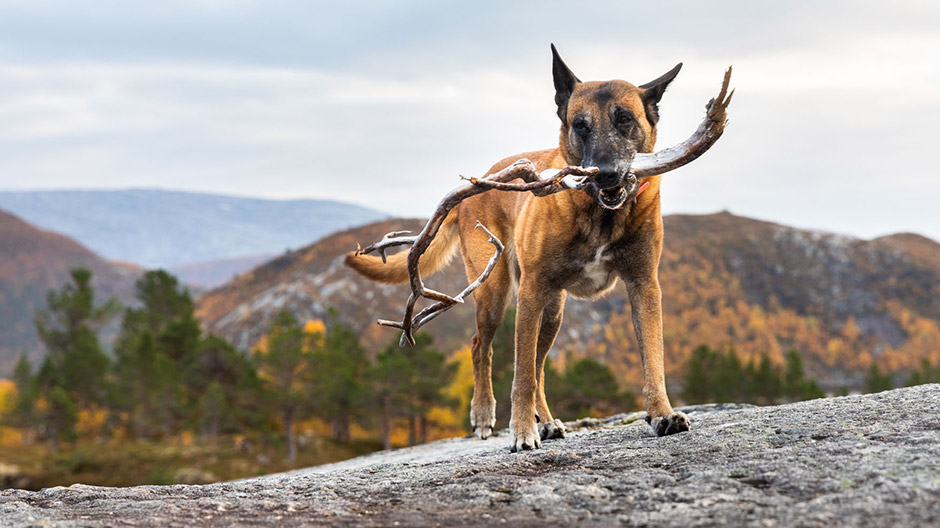
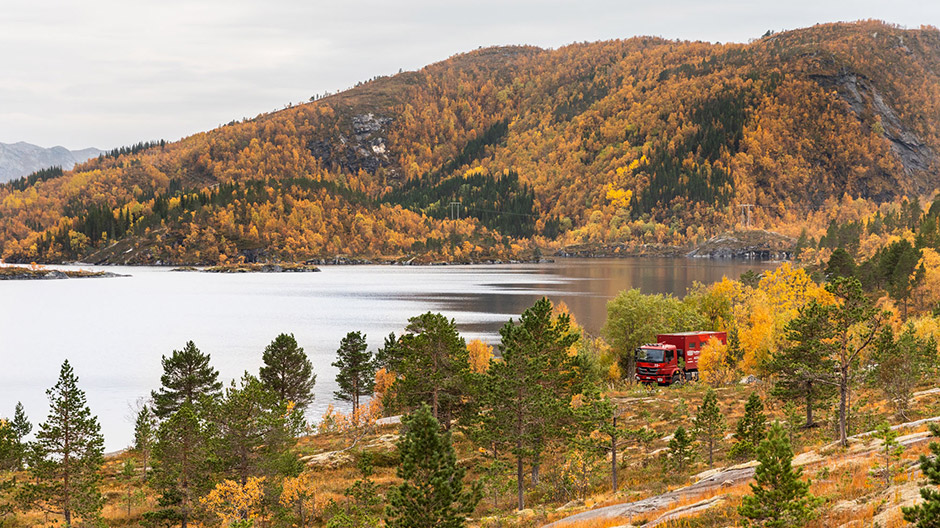
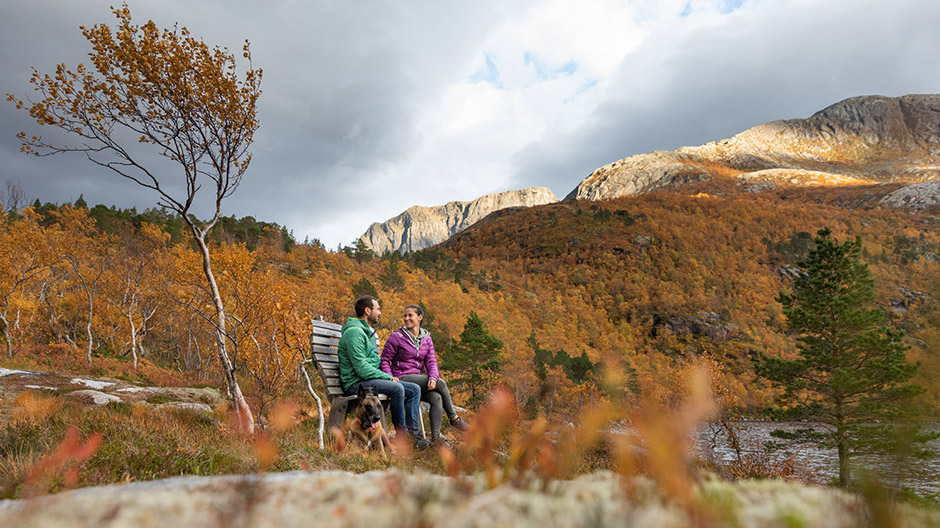
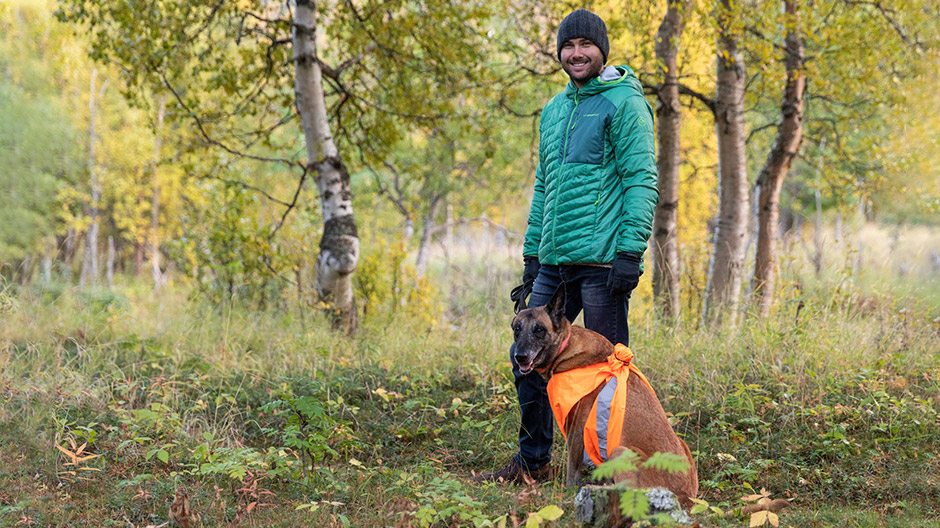
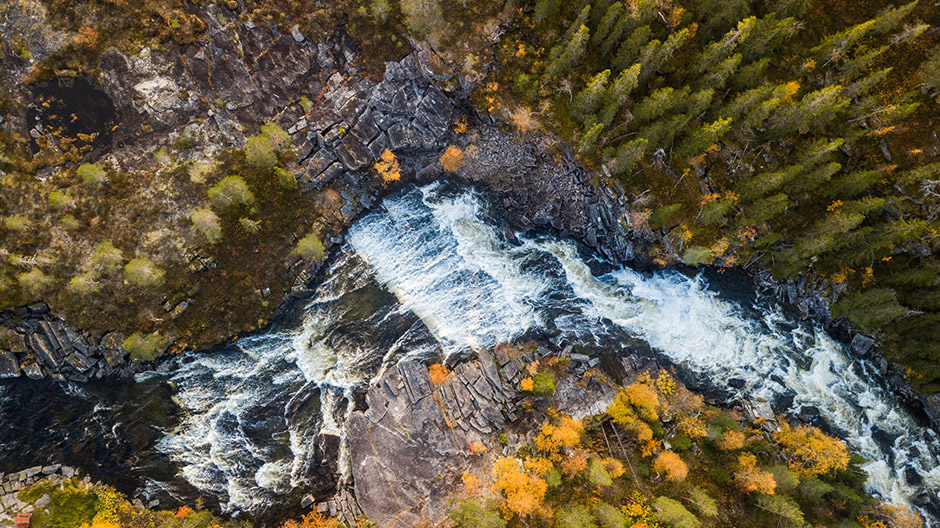
“Prisoners” across the Arctic Circle.
On this route there are several short ferry routes. Which is how we came to cross the Arctic Circle on water as we headed south. There is, in fact, a beautiful monument on a rock, but we were “imprisoned” in the cab of our Axor in the bow of the ferry. It was so full that, unfortunately, we couldn’t climb out and only heard the moment we crossed the Arctic Circle over the loudspeakers.
We used the time when it didn’t rain to hike and discover the autumnal landscape. But we had to take precautions: as the hunting season had begun, a few hunters advised us to put a high-vis vest on Aimée so that she wasn’t shot by mistake. Apparently accidents like that happen more often than you think.
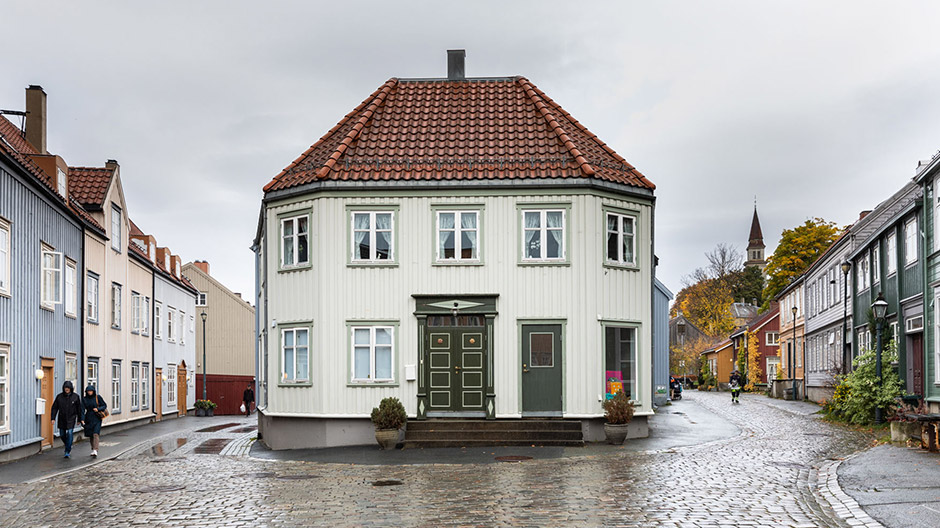
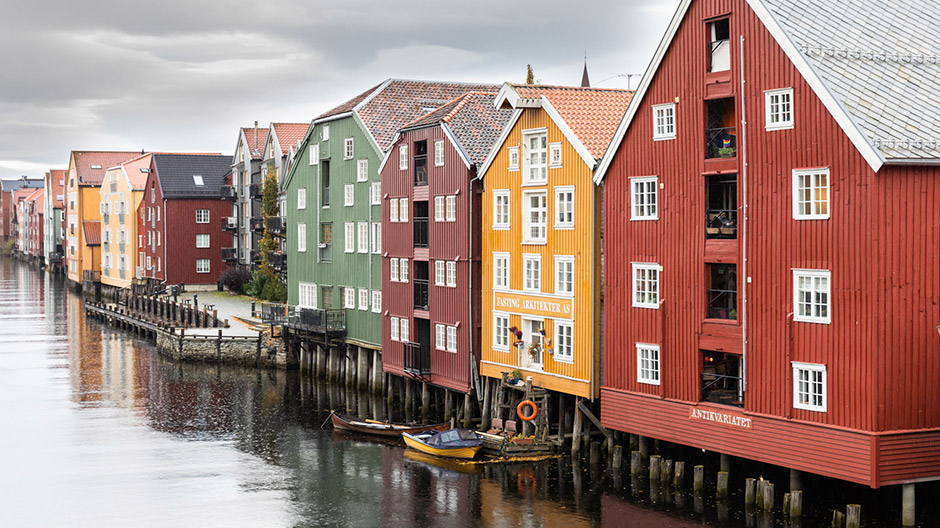
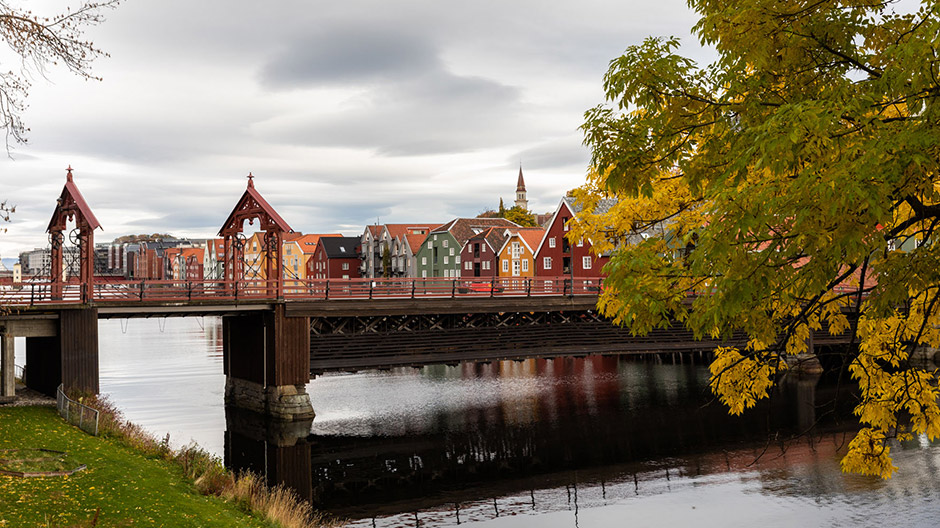
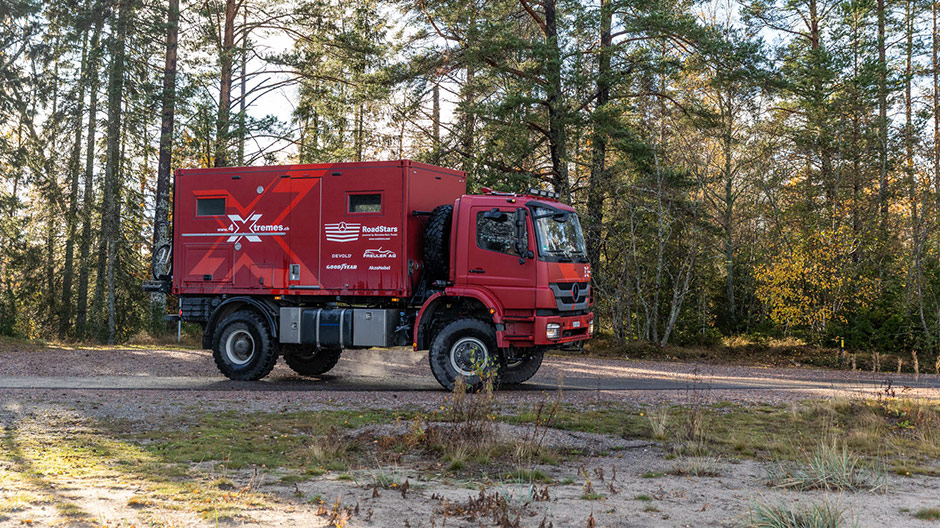
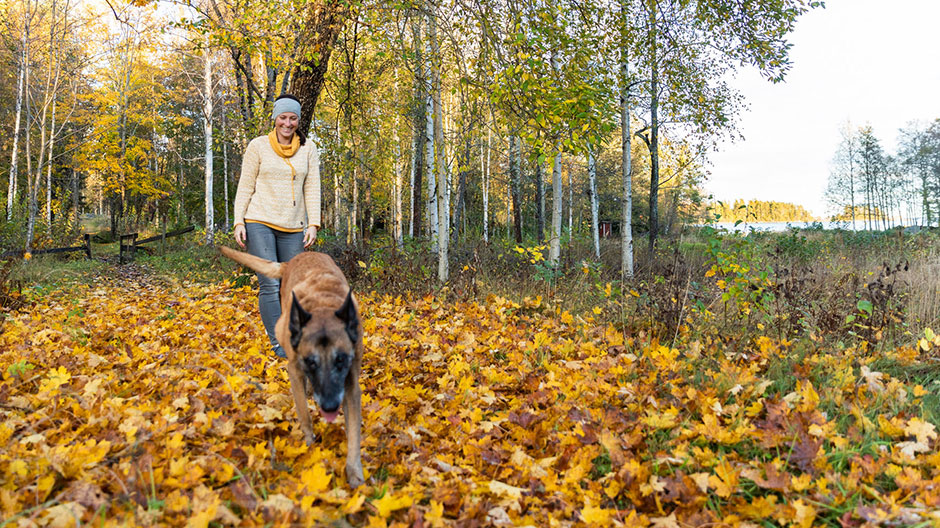
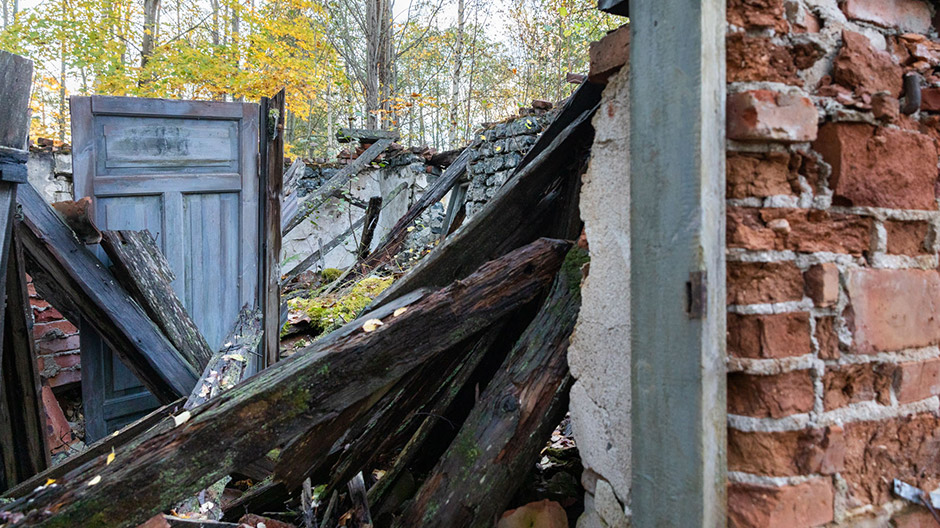

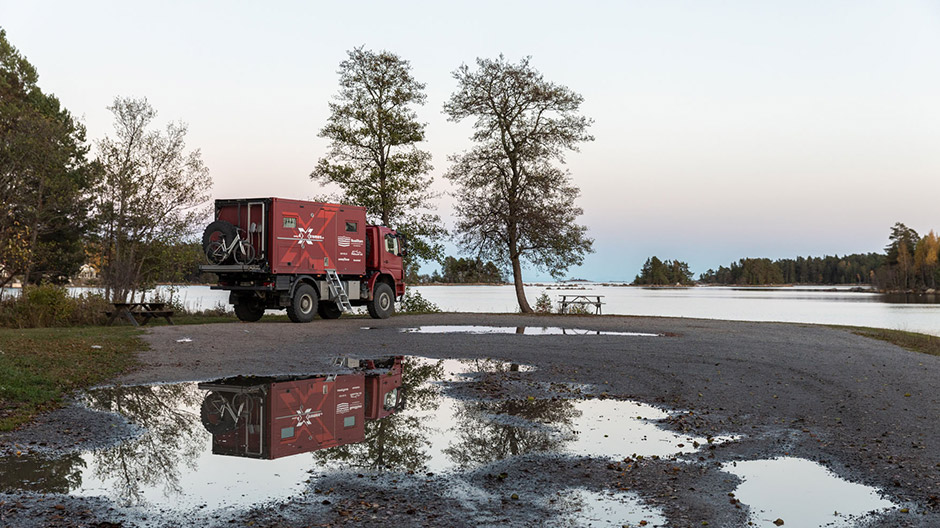
Spring cleaning in autumn.
Trondheim is around 700 kilometres south of Bodø: it was our first large city since we visited Helsinki a good few weeks ago. Despite the rain we really enjoyed the city which is more than 1000 years old and its colourful houses. From there we continued eastwards and crossed the border to Sweden several hours later before finally reaching the Swedish coast at the Baltic Sea.
Once there, we found a peaceful place to complete some maintenance work – and for the first time in a while do some spring cleaning with the windows and doors wide-open. We have long since got used to our small ten-square-metre living space. But when the weather is bad for a longer period, it is difficult to keep it clean. You just can’t stop dirt being carried in on your shoes. Clean clothes become rare too. We do indeed have a washing machine. But as soon as you hang up the washing in the living area, it gets claustrophobic.
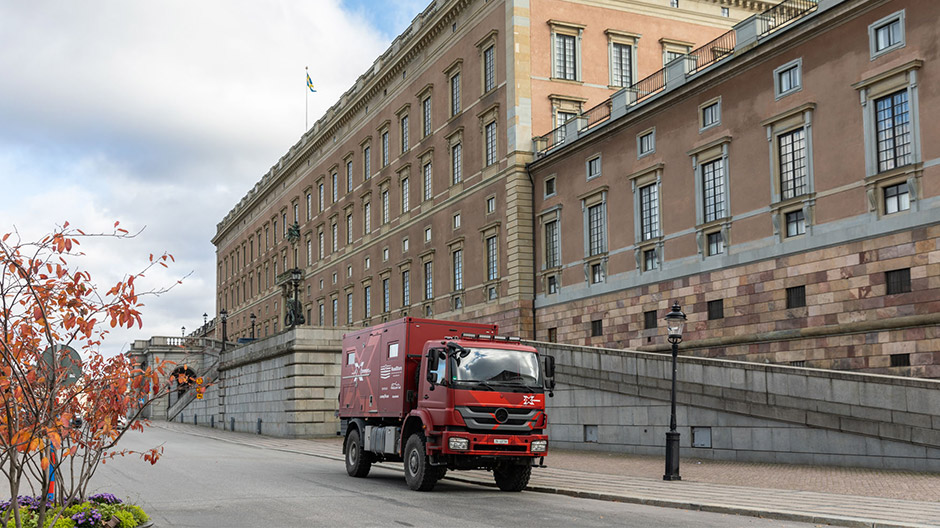
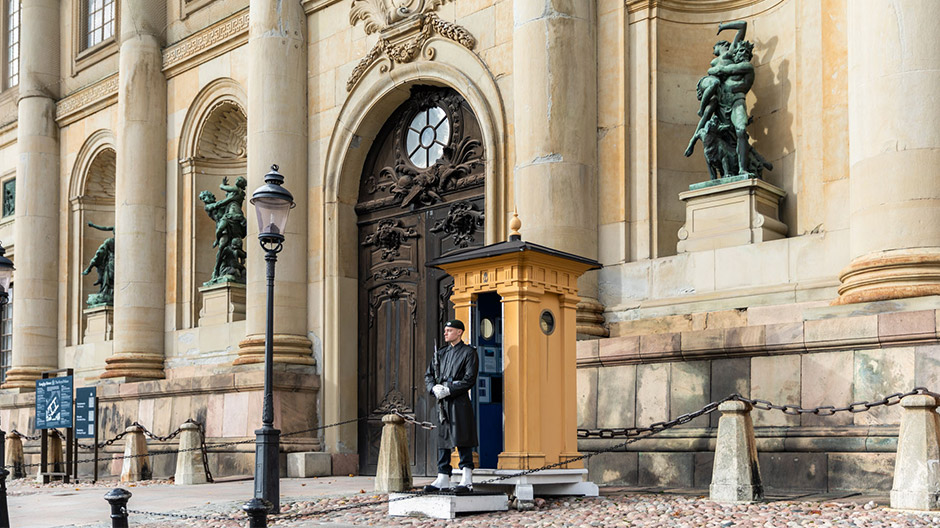
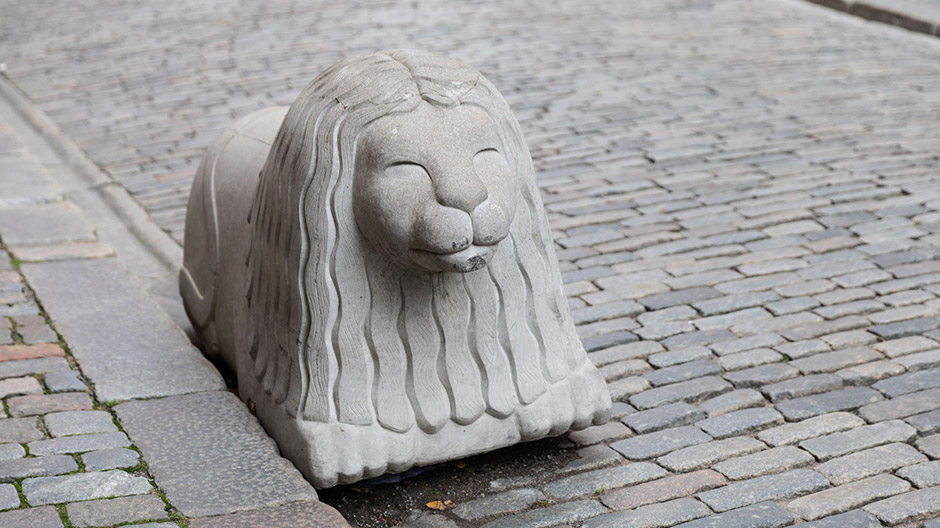
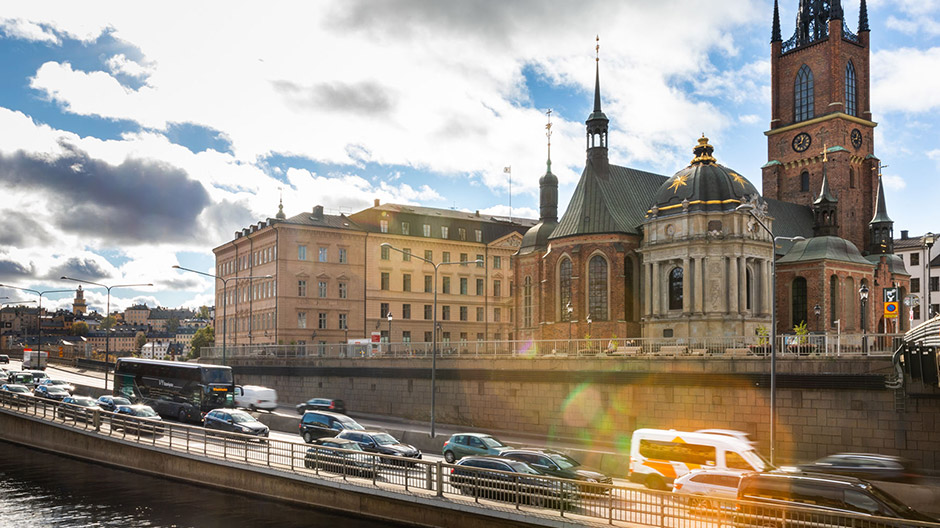
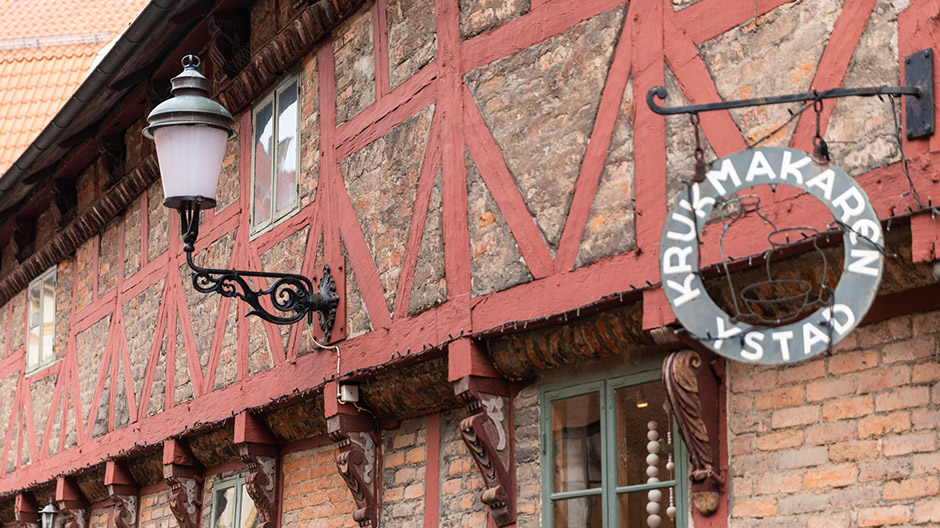
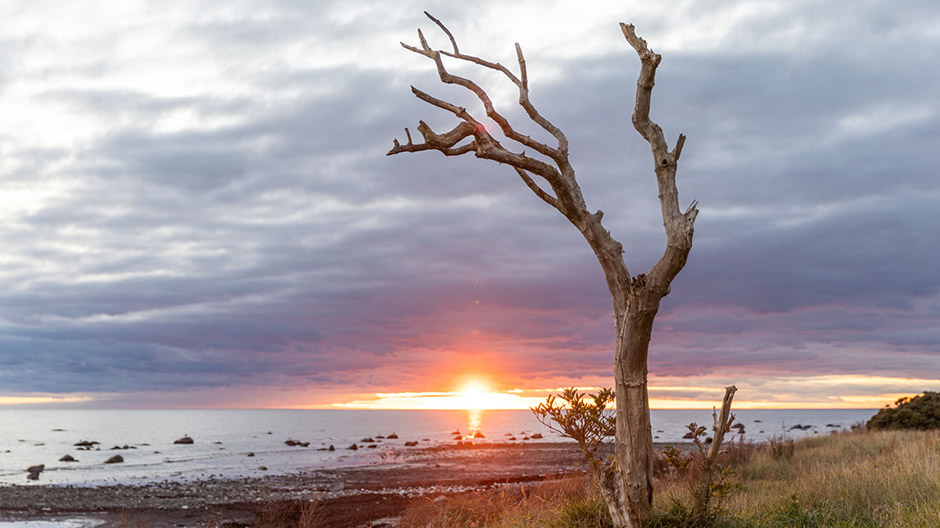
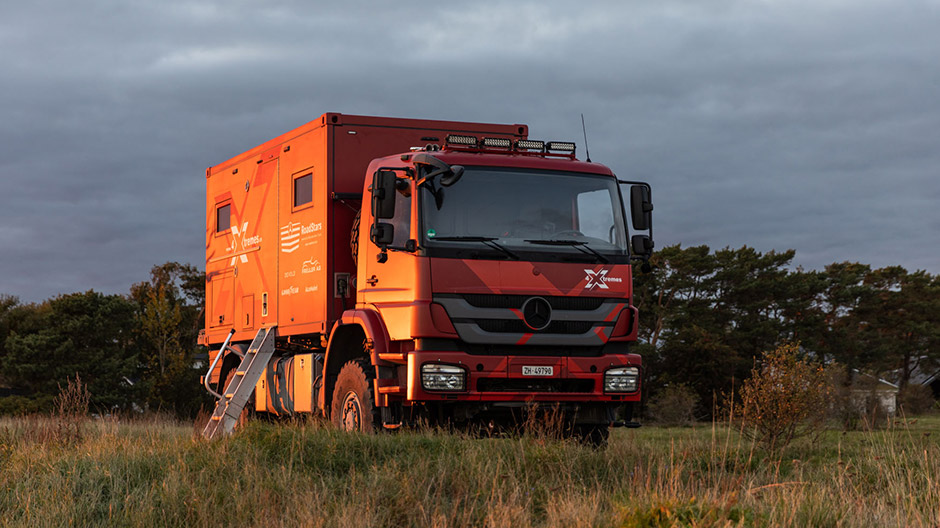
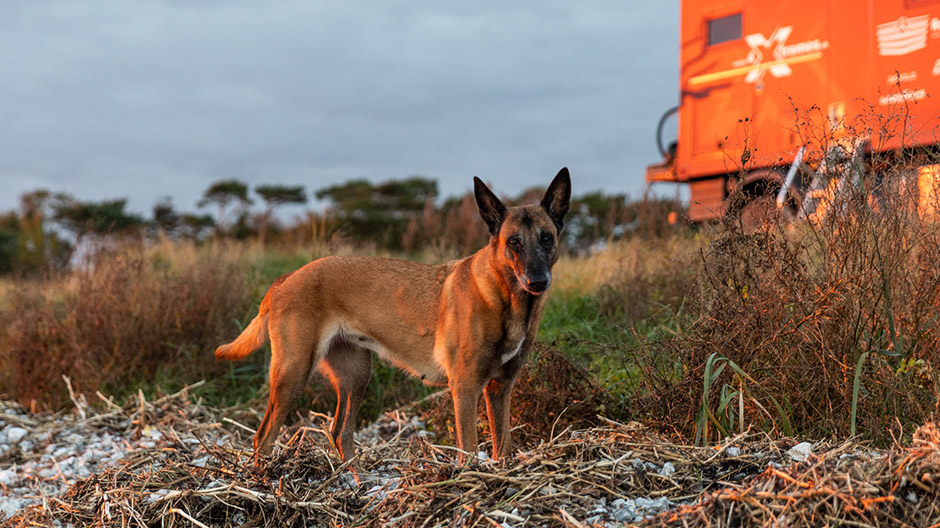
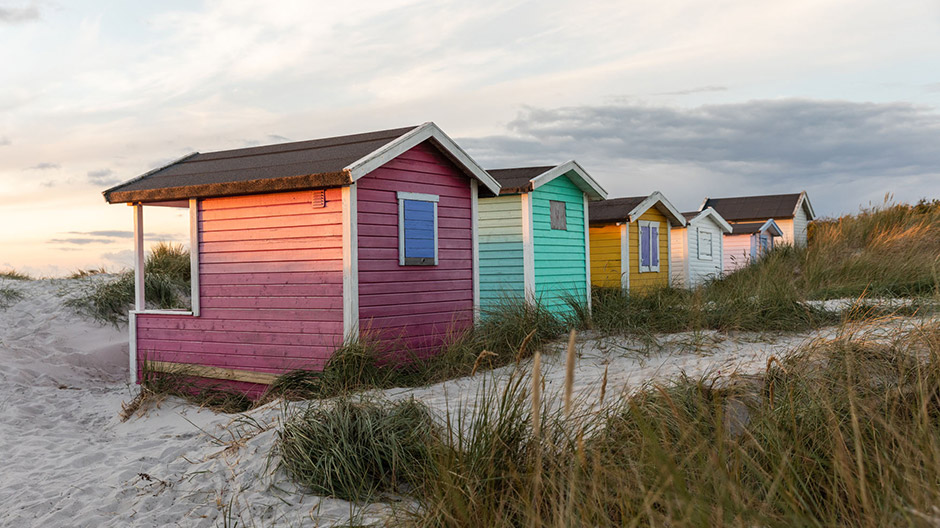
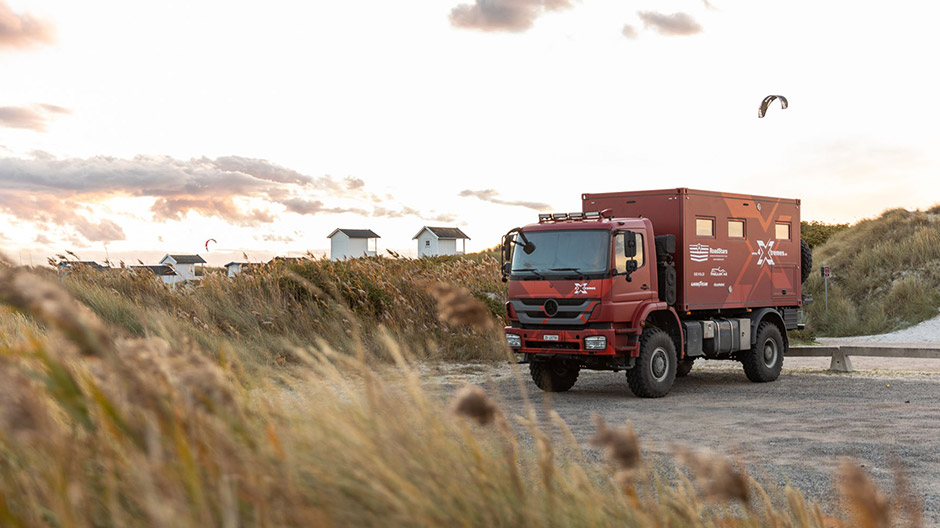
From the “lost place” to Stockholm.
Perhaps you already know: we love “lost places”. That is why the ghost town of Långvinds bruk close to the Baltic Sea was a lovely surprise for us. It dates back to the 16th century and still has a population of around 20. But above all it consists of the ruins of an old ironworks which was driven by hydropower. Iron was smelted and forged here. The iron slag, which is more or less blue stone, was used to build other buildings and the roads. It was fantastic walking through the ruins in the sun, surrounded by that autumn feel.
Next stop: Stockholm! Here we parked our Axor directly in front of the palace where the touring coaches normally stop. The road network in Sweden’s capital is impressive. The old city centre is distributed over several islands, so four-lane roads join them through tunnels and over bridges. So navigating through the city is easy.
Farewell to northern Europe.
On the way to Sweden’s most southerly tip, we visited the royal palace of Tullgarn, walked through national parks on the coast and visited picture-book villages. Here in the south, the red wooden houses, that everyone associates with Sweden, disappear and there are more half-timbered houses – more like those found in Germany.
And this really marked the end of our adventures in northern Europe. By the time you read this we will have crossed the Storebælt bridge, left Denmark behind us and – if everything is going to plan – we’ll be on the road in the direction of Greece. More about that next time here on RoadStars!
4-Xtremes – The World Tour.
An unparalleled journey.
Andrea and Mike Kammermann have been on tour in their Axor for three years. "4-Xtremes – The World Tour" is the motto of the journey that the two Swiss nationals embarked on in mid-2020 and which they share with the RoadStars community. Keep up to date and don't miss out on any of the stunning destinations visited by the adventurous pair.
You can find the current parts from the “4-Xtremes – The World Tour” series here.
You can find the route of the trip before the crossing to South America here.
Photos: 4-Xtremes




Comment
Please log in to post a comment.
18 comments
Gut, daß ihr den Sturm unbeschadet überstanden habt!
Vielen Dank für's berichten - und euch weiter eine sichere Fahrt in Richtung Griechenland!
Gut, daß ihr den Sturm unbeschadet überstanden habt!
Vielen Dank für's berichten - und euch weiter eine sichere Fahrt in Richtung Griechenland!
wens jullie een goede reis en wacht weer op nieuwe verhalen !!👍👍
wens jullie een goede reis en wacht weer op nieuwe verhalen !!👍👍
Aber ich glaube, in Norwegen gibt es kaum eine Ecke die nicht von Naturaus schön ist.
Danke, das wir mit dem bericht einwenig abtauchen durften, vom geplacktem Corona Alltag!
Weiter so!!!!
Aber ich glaube, in Norwegen gibt es kaum eine Ecke die nicht von Naturaus schön ist.
Danke, das wir mit dem bericht einwenig abtauchen durften, vom geplacktem Corona Alltag!
Weiter so!!!!
Viele Grüsse, Andrea & Mike
Viele Grüsse, Andrea & Mike
P.S. wenn ihr an München vorbei kommt auf dem Weg nach Griechenland bitte laut und lange hupen. Falls ihr einen Café trinken wollt, ich lade Euch gerne ein und Manfred kommt auch sicher mit.
P.S. wenn ihr an München vorbei kommt auf dem Weg nach Griechenland bitte laut und lange hupen. Falls ihr einen Café trinken wollt, ich lade Euch gerne ein und Manfred kommt auch sicher mit.
Wir können natürlich nicht überall Sachen mitnehmen, dazu haben wir, obwohl wir mit einem LKW unterwegs sind, nicht genug Platz :D Aaaaber, ich Andrea, liebe es schöne Steinchen zu sammeln und ich hab ein kleines Tupperware das nun voll ist, Mike ist nicht so begeistert davon haha. Aber ein paar kleine schöne blaue Steine sind schon mitgekommen :D
Von Corona merkt man im Norden nicht viel. Es gilt keine Maskenpflicht und neben den Desinfektionsspender am Eingang von Geschäften hats nichts. Ist ganz angenehm.
Wir melden uns auf jeden Fall fals wir in München vorbei fahren sollten ;)
Liebe Grüsse, Andrea & Mike
Wir können natürlich nicht überall Sachen mitnehmen, dazu haben wir, obwohl wir mit einem LKW unterwegs sind, nicht genug Platz :D Aaaaber, ich Andrea, liebe es schöne Steinchen zu sammeln und ich hab ein kleines Tupperware das nun voll ist, Mike ist nicht so begeistert davon haha. Aber ein paar kleine schöne blaue Steine sind schon mitgekommen :D
Von Corona merkt man im Norden nicht viel. Es gilt keine Maskenpflicht und neben den Desinfektionsspender am Eingang von Geschäften hats nichts. Ist ganz angenehm.
Wir melden uns auf jeden Fall fals wir in München vorbei fahren sollten ;)
Liebe Grüsse, Andrea & Mike
Grüße Jörg 👍👌👍👌👍👌⛟😎
Grüße Jörg 👍👌👍👌👍👌⛟😎
Gueti, unkomlizierti Wiiterreis Richtig Süde 👌
LG us Münche 👋
Gueti, unkomlizierti Wiiterreis Richtig Süde 👌
LG us Münche 👋
LG, Andrea & Mike
LG, Andrea & Mike